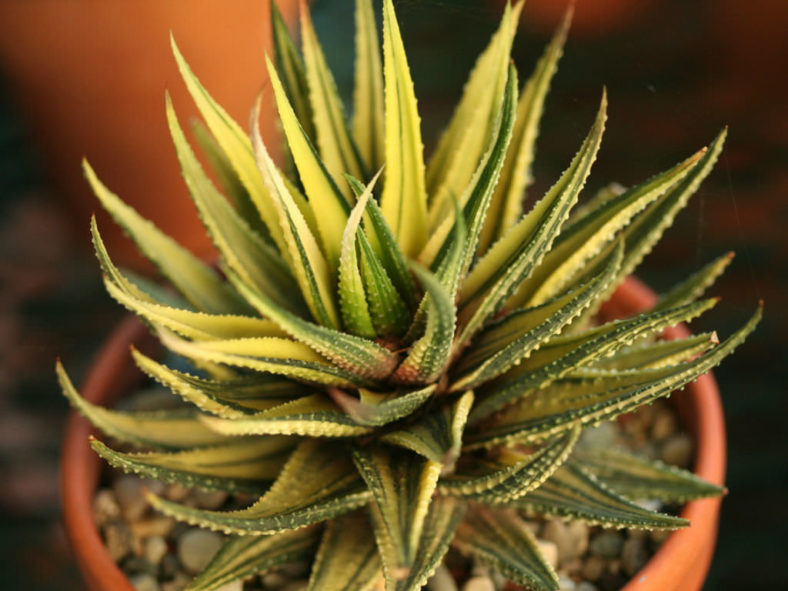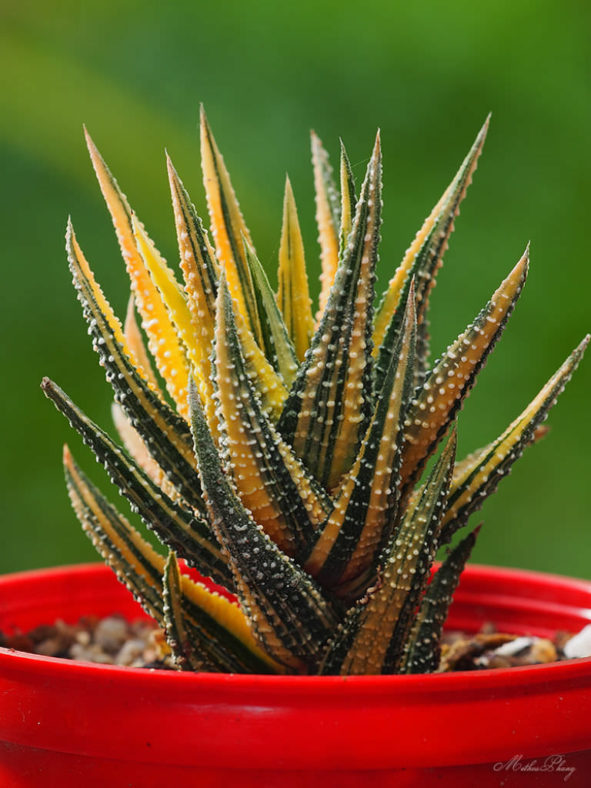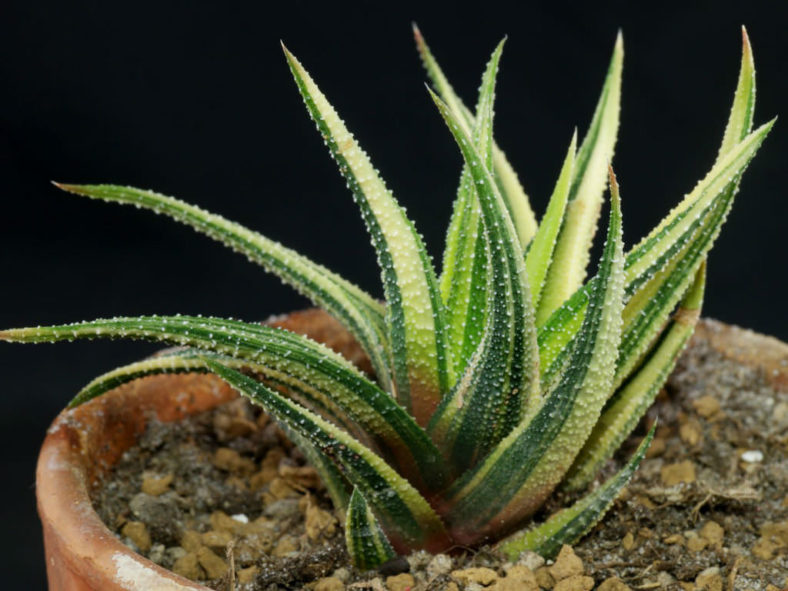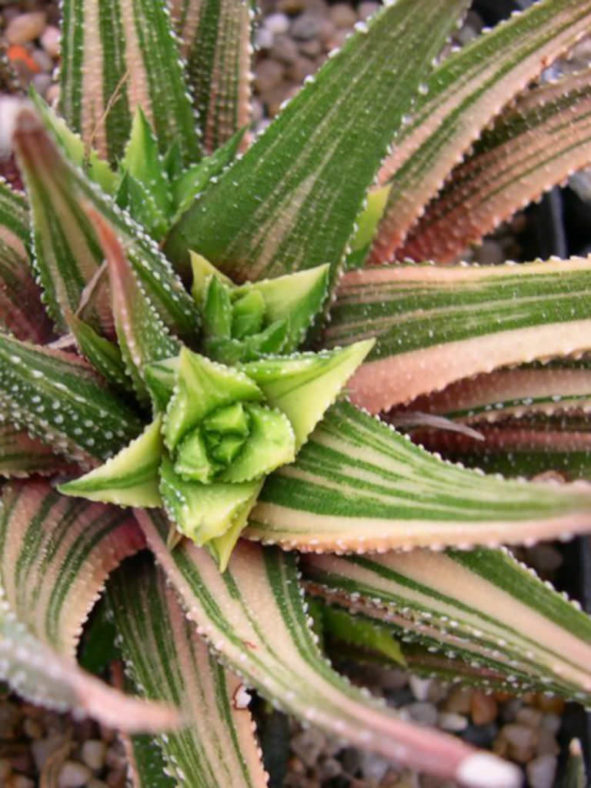Scientific Name
Haworthiopsis attenuata var. radula 'Variegata'
Accepted Scientific Name
Haworthiopsis attenuata var. radula (Jacq.) G.D.Rowley
Synonyms
Haworthia attenuata var. radula f. variegata, Haworthia attenuata var. radula 'Variegata', Haworthia radula f. variegata, Haworthiopsis attenuata var. radula f. variegata
Scientific Classification
Family: Asphodelaceae
Subfamily: Asphodeloideae
Tribe: Aloeae
Genus: Haworthiopsis
Origin
Haworthiopsis attenuata var. radula 'Variegata' is a form of Haworthiopsis attenuata var. radula selected for its variegated foliage.
Description
Haworthiopsis attenuata var. radula 'Variegata', formerly known as Haworthia attenuata var. radula 'Variegata', is an attractive succulent that forms rosettes of variegated leaves with white tubercles on both surfaces. The rosettes can reach a height and diameter of 6 inches (15 cm) and produce offsets, forming a dense clump with age. The leaves are dark green, marbled with irregular creamy-white, yellow, or pink markings. They are thick, fleshy, erect, and can measure up to 3.2 inches (8 cm) long and 0.8 inches (2 cm) wide.
The white flowers have reddish-brown veins and appear on slender stalks that can grow up to 12 inches (30 cm) long, usually from spring to fall.

How to Grow and Care for Haworthiopsis attenuata var. radula 'Variegata'
Light: Although most species can tolerate full sun, these succulents thrive in semi-shaded positions. However, brighter light conditions are needed to bring out the leaf coloration.
Soil: Plant your Haworthiopsis in commercial soil formulated for succulents or make your own well-draining potting mix.
Hardiness: Haworthiopsis attenuata var. radula 'Variegata' can withstand temperatures as low as 30 to 50 °F (-1.1 to 10 °C), USDA hardiness zones 10a to 11b.
Watering: In spring and fall, when the growth is most active, water Haworthiopsis thoroughly, then wait until the top of the soil dries out before watering again. Water your plants less during the winter when their growth slows down significantly. During the hottest summer months, when Haworthiopsis are mostly dormant, water it just enough to keep the leaves from shriveling.
Fertilizing: Haworthiopsis are slow-growing succulents that do not require much fertilizer. Therefore, feed them with a dilute fertilizer only from spring to fall.
Repotting: When the plant has outgrown its container, repot in the spring or early summer into a new, slightly larger pot with fresh soil.
Propagation: Haworthiopsis are mostly and easily grown from stem cuttings or by removing offsets from the mother plant.
Learn more at How to Grow and Care for Haworthiopsis.
Toxicity of Haworthiopsis attenuata var. radula 'Variegata'
Haworthiopsis species are generally non-toxic to humans and animals.
Links
- Back to genus Haworthiopsis
- Succupedia: Browse succulents by Scientific Name, Common Name, Genus, Family, USDA Hardiness Zone, Origin, or cacti by Genus
Photo Gallery
Click on a photo to see a larger version.


